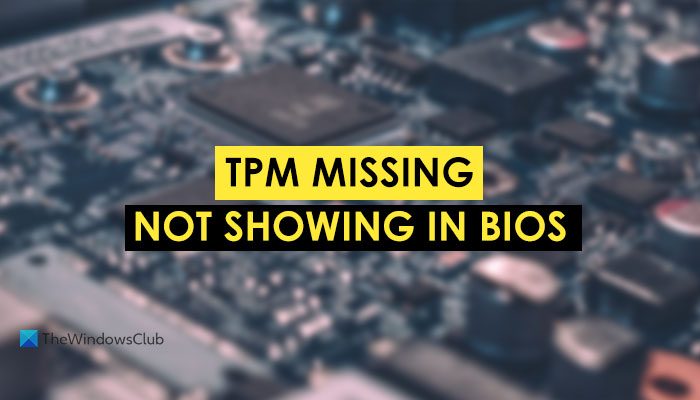TPM or Trusted Platform Module is required to install Windows 11. Otherwise, it displays an error message saying This PC can’t run Windows 11. The best thing is that you can enable or disable TPM 2.0 from the BIOS. All the Windows 11 compatible processors come with this security chip that needs to be enabled manually if not turned on by default. To turn that on, you must have to access the BIOS. The problem starts when you cannot find the TPM setting in the BIOS. You need to go through the enabling process in the BIOS so that you can find the TPM status in Device Manager or the Security processor details section in Windows Security.
TPM missing or not showing in BIOS
To fix TPM missing or not showing in BIOS issue, follow these steps: To learn more about these steps, continue reading.
There is no TPM available, Please check your BIOS settings
1] Check processor compatibility
It is the first thing you need to check before heading to other solutions. Windows 11 requires a modern-day processor to be installed on your computer. However, it is quite difficult to find the TPM chip support if you have an aged processor. If you have an Intel processor, make sure that it is Atom x6200FE or later versions. On the other hand, if you have an AMD processor, ensure that you have 3015e or later versions. It would be better if you find you match your Intel processor with this list or AMD processor with this list at docs.microsoft.com. If you can find your processor name on the aforementioned list, follow the rest of the solutions. However, if you cannot find the name of your installed processor name on the list, you need to opt for a new processor that supports Windows 11.
2] Update BIOS
If you have Trusted Platform Module, you should get the corresponding setting by the name of Trusted Computing or something like that in the BIOS. However, if you haven’t updated your BIOS firmware for a very long time, it might not be visible in the BIOS. Therefore, it is recommended to update BIOS on your computer and check if you can find the TPM setting or not.
3] Problems with TPM chip
Trusted Platform Module or TPM is a dedicated chip installed on your motherboard. If there are some issues with this chip, you cannot find the corresponding setting in the BIOS. That is why it is wise to get help from a professional so that they can check the chip manually and help you further. Read: The TPM could not be initialized after BIOS update.
What if TPM is not detected?
You can check the TPM activation status in the Device Manager, Trusted Platform Module (TPM) Management on Location Computer panel, and Windows Security. However, if you cannot find TPM in those places, you need to enable it from the BIOS. Nonetheless, if your BIOS doesn’t have the TPM setting, follow the aforementioned solutions.
Does my BIOS have TPM?
Having the TPM setting in the BIOS depends on the processor and motherboard you have installed for your computer. If your processor name comes on the Windows 11 compatible list of processors, you can find the TPM setting in the BIOS. However, if it doesn’t, you cannot find the same in the BIOS. In that case, you need to upgrade your processor/motherboard or install the TPM chip from third-party resources. Read: Fix Alert! TPM device is not detected error on Dell computers.

